Assaia International’s Max M Diez explains how AI and machine learning have the answer to the challenges posed by the turnaround
The aviation industry uses technology widely to tackle the demands of sustainability, safety and capacity. Digital solutions are essential for airports and airlines to remain operational and, looking to the future, to keep up with the predicted growth in aviation while maintaining their commitment to achieving net zero emissions.
However, one piece of the jigsaw puzzle has been missing: the turnaround. Artificial intelligence (AI) and computer vision software can be applied to the vast numbers of cameras located in and around airports to analyse footage and collect new data. By embracing a data-driven approach to turnaround management, the industry is taking a vital step towards on-time performance with fewer delays and more efficient and sustainable airports and airlines.

AI technologies are revolutionising the way we automate current processes. Computer vision and AI track the movements of aircraft on the apron and predict key turnaround events. The technology notifies catering companies if they are not on schedule and ensures a bridge is always available to enable passengers to disembark as soon as the aircraft parks. With autonomous catering trucks, the software can request their services at the ideal moment during the turnaround. The result is a combination of predictive analysis to make systemic changes and real-time data to manage day-to-day decision-making.
A range of tools
Assaia’s mission is to use AI and computer vision to give airports and airlines full visibility of turnaround operations. By these, we mean the 45 minutes where there has hitherto been minimal scrutiny of the hundreds of tasks done by more than 75 people to park the aircraft, clean and fuel it, get the passengers off and on, and then away again on time. With our technology, we enable airlines to turn around aircraft efficiently and help airports free up gates faster. In addition to the obvious benefits to both passengers and airport operators, this also leads to significant reductions in CO2 emissions.
Our mission is to use AI to give airports and airlines full visibility of turnaround operations
Assaia's Turnaround Control platform keeps airports running smoothly by managing operations and resources in real time, with flight and weather data taken into account. We use computer vision alongside our data from millions of turnarounds across 30+ airports to provide accurate insight on when the aircraft will leave its gate (off-block time). This advanced system reduces taxi-in and average gate holding times and optimises gates for incoming flights, resulting in a streamlined traffic flow at all times.
While traffic flow is a priority, safety remains key to effective airport operations. The Assaia portfolio includes the Risk Control platform, which proactively safeguards airports and their workers by continuously monitoring the apron for unsafe behaviour. With real-time and historical safety data, staff can be trained to recognise potential threats while feeding this information into existing safety management systems, optimising airport security even further.
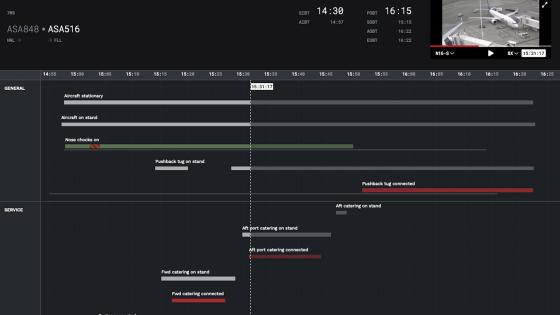
ApronAI has been designed to help check for damage in the stand area
Assaia's APU Emissions Control provides an essential sustainability solution by monitoring auxiliary power unit (APU) usage and alerting users when APUs are not turned off in time, ensuring emissions are minimised. Furthermore, historic tracking of APU usage enables an airport’s sustainability team to understand how the various airlines perform in terms of their environmental targets.
Assaia ApronAI, meanwhile, uses computer vision to detect turnaround events from airport video streams and leverages untapped operational data. The data provides real-time situational awareness and accurate predictions to enable highly efficient decision-making.
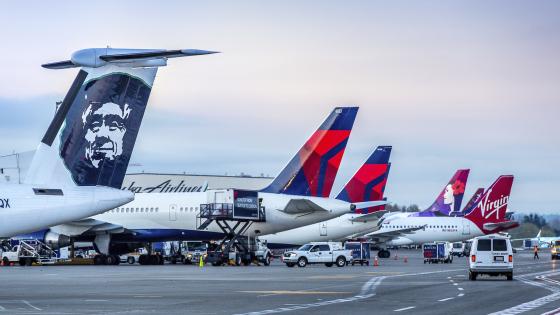
Using Assaia’s POBT, SEA reduced average gate holding time
A range of tools
Assaia’s mission is to use AI and computer vision to give airports and airlines full visibility of turnaround operations. By these, we mean the 45 minutes where there has hitherto been minimal scrutiny of the hundreds of tasks done by more than 75 people to park the aircraft, clean and fuel it, get the passengers off and on, and then away again on time. With our technology, we enable airlines to turn around aircraft efficiently and help airports free up gates faster. In addition to the obvious benefits to both passengers and airport operators, this also leads to significant reductions in CO2 emissions.
Assaia's Turnaround Control platform keeps airports running smoothly by managing operations and resources in real time, with flight and weather data taken into account. We use computer vision alongside our data from millions of turnarounds across 30+ airports to provide accurate insight on when the aircraft will leave its gate (off-block time). This advanced system reduces taxi-in and average gate holding times and optimises gates for incoming flights, resulting in a streamlined traffic flow at all times.
While traffic flow is a priority, safety remains key to effective airport operations. The Assaia portfolio includes the Risk Control platform, which proactively safeguards airports and their workers by continuously monitoring the apron for unsafe behaviour. With real-time and historical safety data, staff can be trained to recognise potential threats while feeding this information into existing safety management systems, optimising airport security even further.
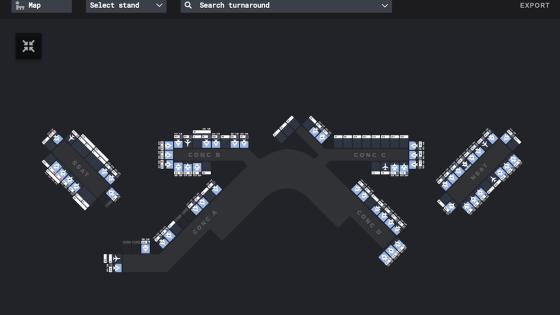
Assaia’s solutions help create a more sustainable airport ecosystem
Assaia's APU Emissions Control provides an essential sustainability solution by monitoring auxiliary power unit (APU) usage and alerting users when APUs are not turned off in time, ensuring emissions are minimised. Furthermore, historic tracking of APU usage enables an airport’s sustainability team to understand how the various airlines perform in terms of their environmental targets.
Assaia ApronAI, meanwhile, uses computer vision to detect turnaround events from airport video streams and leverages untapped operational data. The data provides real-time situational awareness and accurate predictions to enable highly efficient decision-making.
Solutions in action
Seattle-Tacoma International Airport (SEA) served 36.2 million passengers in 2021. With three runways and 89 gates, SEA has the highest passenger count per gate in North America. Its operators, therefore, need to focus on getting the most out of every gate. SEA required an innovative solution to increase its capacity, achieve real-time oversight over airside operations to ensure safety, and demonstrate it was achieving its ambitions to reach net zero by 2050.
The results of SEA’s work with Assaia International have been striking: on-time-performance increased by 17% for flights managed by Assaia software, and the airport saw a reduction in average taxi-in time by almost a minute, leading to potential annual savings of more than $25m. Average excess gate holding time fell by 79% and airlines’ annual kerosene costs dropped by $1m, alongside a 1,500,000kg annual reduction in CO2 emissions.
By embracing a data-driven approach to turnaround management, the [airports] industry is taking a vital step
Using Assaia’s Predicted Off-block Time (POBT) platform, SEA reduced average gate holding times by nine minutes, resulting in savings of $5m. Average gate departure delays for late flights fell by 3.9 minutes, resulting in increased gate capacity. Use of POBT to optimise the arrival flow has the potential to save SEA a further $5m a year and to reduce CO2 emissions by 7,500,000kg annually.
JFK International Air Terminal (JFKIAT) is one of the busiest terminals in the New York area, with annual passenger volumes of 21 million. It serves 24 airlines and works with a range of ground handlers, resulting in a need for maximum visibility of operations between all turnaround stakeholders as they co-operate to reduce delays and ensure a safe apron environment. Assaia worked with the airport to tackle any turnaround shortcomings.
The partners saw an average reduction in ground delays of five minutes for flights managed by Assaia, resulting in potential annual cost savings of $40m across all flights. The terminal’s capacity to handle additional flights with the same number of gates rose, while the percentage of occasions where the gate was clear when the aircraft arrived has increased by 25% since Assaia solutions were installed.
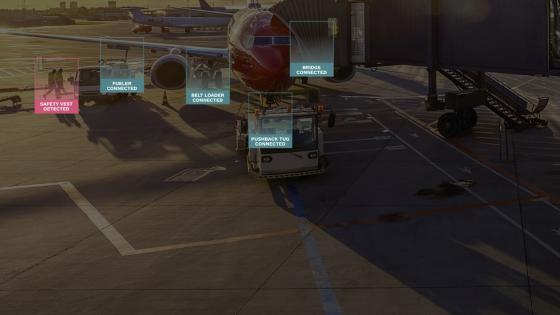
In addition to airports, Assaia works with airlines, among them Alaska Airlines. Its 300-strong fleet delivers passengers to more than 120 destinations, with a particular emphasis on Seattle-Tacoma International Airport, which accounts for a third of the Seattle-headquartered airline’s business. With a clear ambition to be an on-time airline, Alaska Airlines needed to prevent delays, react quickly to unanticipated issues and optimise gate allocations, so each journey is seamless for their passengers.
Assaia helped Alaska Airlines reduce average ground delays for delayed flights by 3.9 minutes, equating to a 30% increase in profit per flight. It helped deliver a 17% increase in the number of flights departing on time, a 12% reduction in turnaround time and a 25% reduction in ground delay minutes.
Using Assaia’s Turnaround Control, Alaska has been able to proactively prevent delays, get ahead of operational issues and improve gating allocation. The cost implications are not to be sneered at, either: four minutes less on the turnaround across the fleet can mean annual cost savings of $15m.
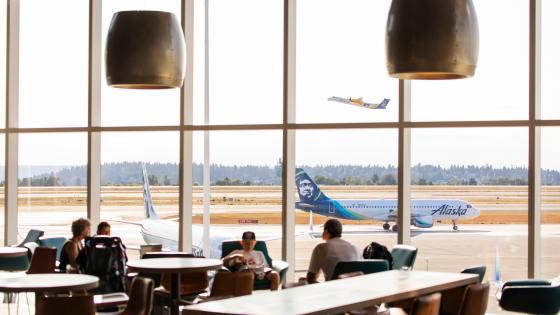
ApronAI: taking a closer look
Assaia ApronAI uses computer vision to detect turnaround events from video streams, leveraging untapped operational data to bring efficiency, safety and sustainability to the apron.
The system can work with multiple cameras covering the same location/aircraft stand. It can be used with a wide range of cameras, including those already installed. It is common for customers to allocate up to three cameras per stand and to also install them on passenger boarding bridges to monitor boarding-specific events.
If the camera position and the layout of a series of adjacent aircraft stands are similar, it is sufficient to calibrate the system rather than for each individual stand. Assaia has found that the higher up a camera is installed, the more events can be detected. However, decisions about camera positions are dependent on which processes are most important for the customer to monitor.
The system can detect many objects on an aircraft stand and determine if the stand is clear for an aircraft to enter. It can also support the process of FOD (foreign object debris/damage) inspection, checking whether it was performed properly.
ApronAI operates within normal preference levels in adverse weather conditions such as snow, rain, fog or sandstorms and, according to Assaia, its performance at night may even be slightly better due to constant light sources on the apron.
